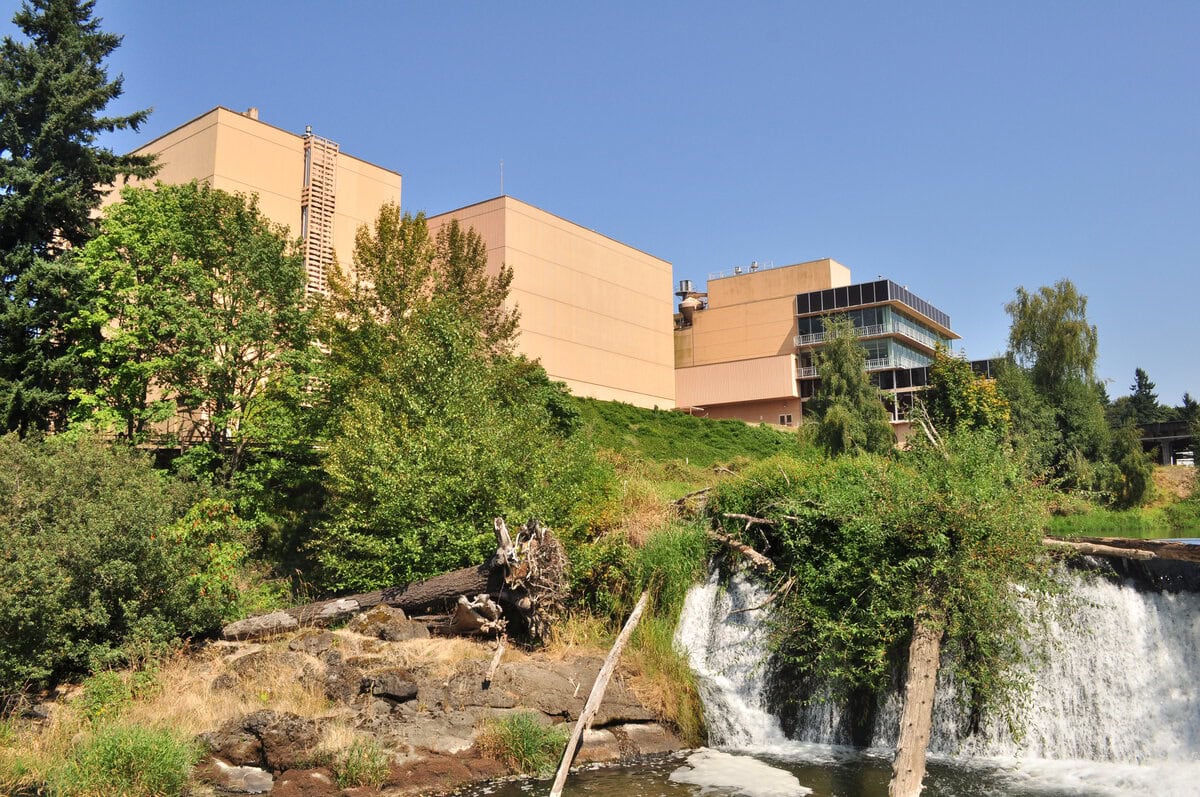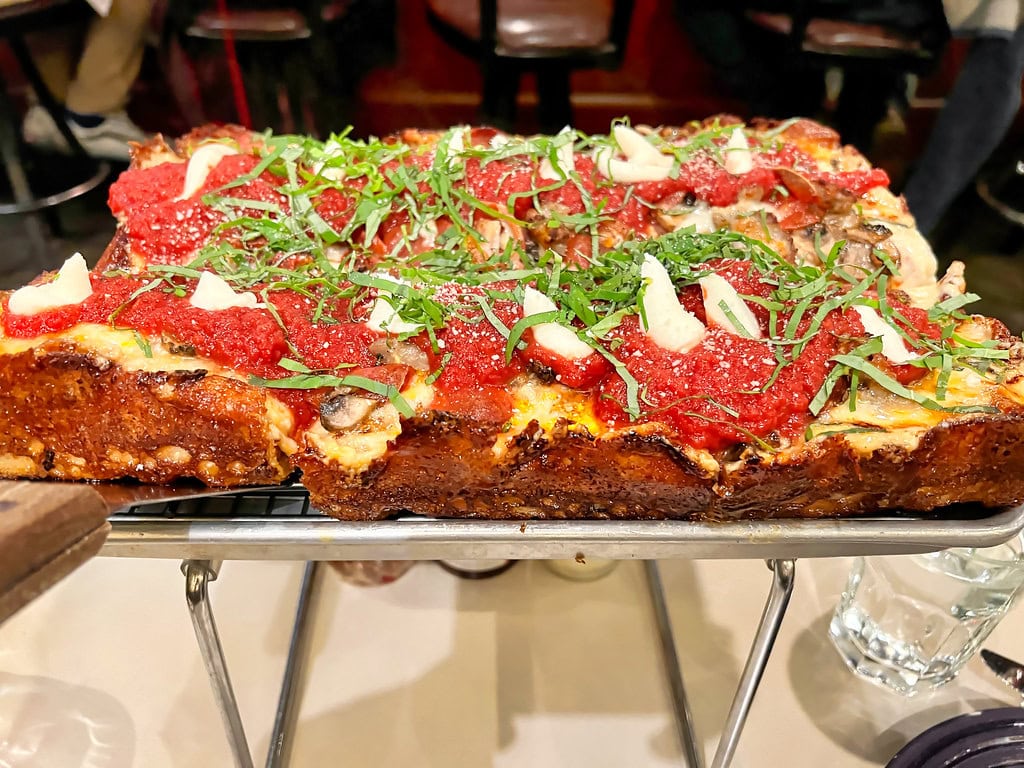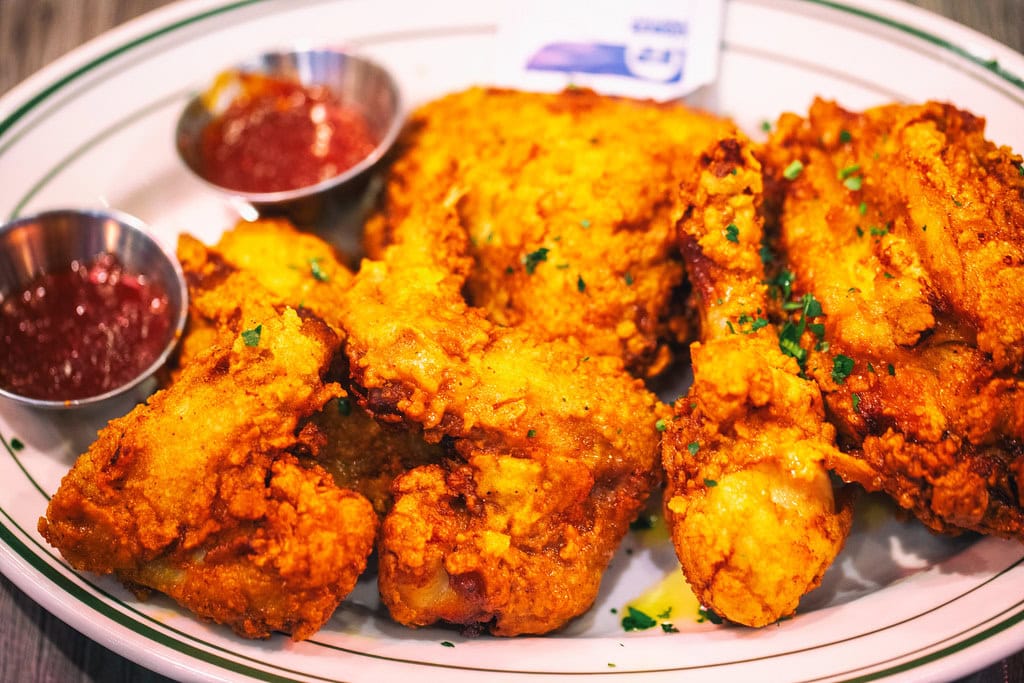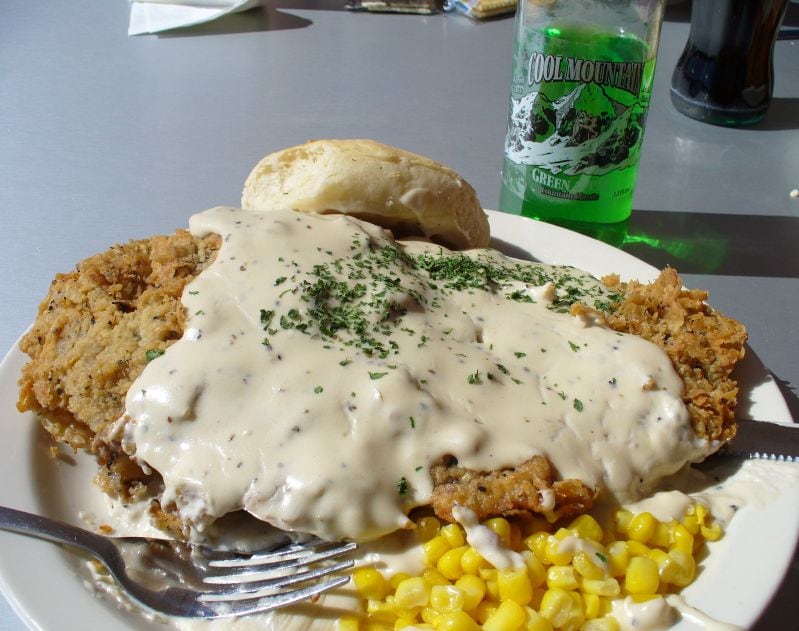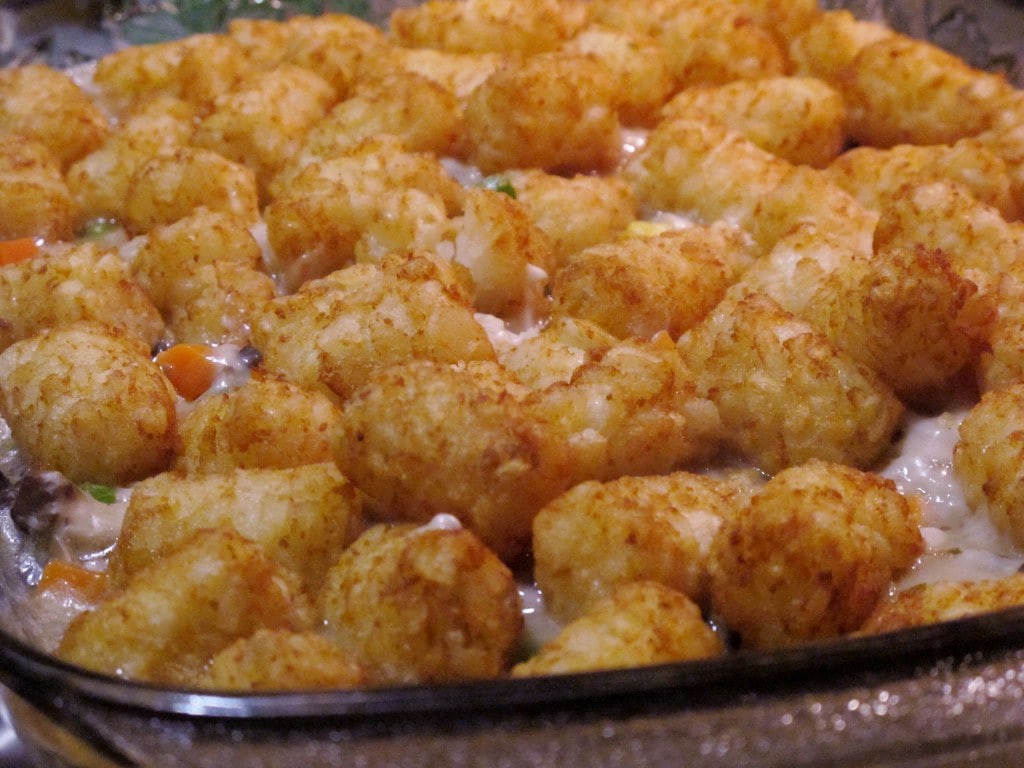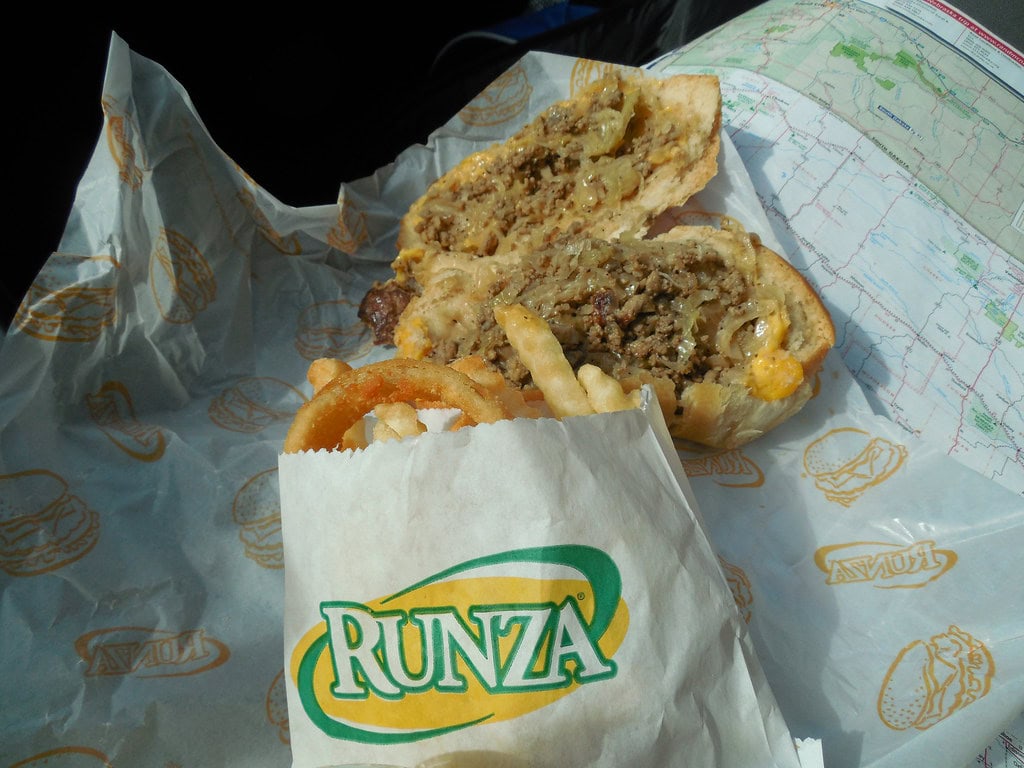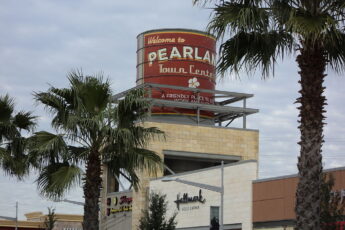Maryland's Must-Try Foods: A Culinary Journey Through the Chesapeake State
Maryland is famous for its blue crabs, which are steamed, seasoned, and cracked open at a paper-covered table with a cold drink in hand. Seafood defines much of the state's food culture, but there's plenty more to discover. From smoky pit beef sandwiches to the multi-layered sweetness of Smith Island Cake, Maryland's cuisine reflects its geography, history, and local traditions.
Chesapeake Bay provides an endless supply of crabs and oysters, shaping generations of seafood dishes.
Old Bay seasoning, a staple in Maryland kitchens since 1939, brings its signature spice to everything from crabs to fries.
Meanwhile, Baltimore's pit beef stands to compete with other regional barbecue styles, offering charred, thin-sliced roast beef piled high on a roll with horseradish sauce.
Southern Maryland has its traditions, like stuffed ham, corned ham packed with greens and spices.
On the sweeter side, Smith Island Cake, with its paper-thin layers and rich frosting, is Maryland's official dessert.
And when summer rolls around, nothing beats a Baltimore-style snowball, fluffy shaved ice drenched in syrup, often topped with a thick layer of marshmallow.
Maryland's food scene is a blend of old and new, shaped by watermen, farmers, and generations of home cooks.
Whether you're cracking crabs at a backyard feast, grabbing a quick pit beef sandwich, or indulging in a slice of Smith Island Cake, the state's flavors tell a story, one bite at a time.
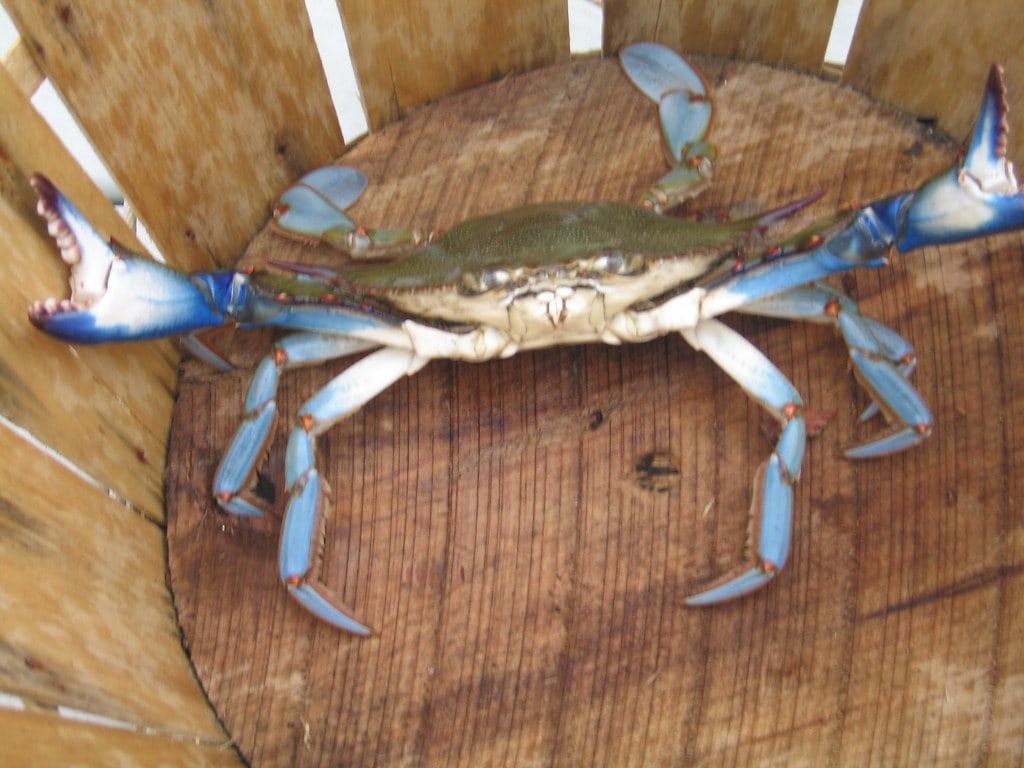
Blue Crabs: The Heart of Maryland's Seafood Tradition
Maryland and blue crabs go hand in hand. Every summer, locals gather around tables covered in newspaper, armed with wooden mallets and a pile of freshly steamed crabs.
The Chesapeake Bay supplies these crustaceans, making them a staple of the state's cuisine for centuries.
Steamed blue crabs are the most iconic way to enjoy them. They are cooked with generous amounts of Old Bay seasoning, giving them a spicy, savory kick.
Picking crabs takes patience. You break through the shell, pull out the sweet meat, and dip it in butter or vinegar. It's as much a social event as it is a meal.
Soft-shell crabs, another delicacy, are eaten whole. Once a crab molts, its shell stays soft long enough to be fried, grilled, or sautéed.
The result is crispy on the outside, tender on the inside, and packed with briny flavor. Crabbing is a way of life for many in Maryland.
Watermen have harvested these crabs for generations, supplying restaurants, markets, and roadside seafood shacks.
Whether enjoyed at a backyard feast or a waterfront restaurant, blue crabs remain at the center of Maryland's food culture.
Maryland Crab Cakes: The Iconic Dish
If you ask anyone what to eat in Maryland, crab cakes are always near the top of the list.
Unlike versions found in other places, Maryland crab cakes focus on simplicity, letting the crab meat shine.
Lump crab meat, preferably fresh from the Chesapeake Bay, is the star.
Traditional recipes use minimal filler, just enough breadcrumbs, mayonnaise, and mustard to hold everything together.
A touch of Old Bay and a squeeze of lemon bring out the crab's natural sweetness.
Baltimore's Faidley's Seafood is one of the best-known spots for crab cakes.
Their jumbo lump version, broiled to golden perfection, has been a favorite since 1886.
Many restaurants across the state follow similar recipes, while others put their spin on the classic.
Crab cakes can be fried or broiled, served as an entrée or on a sandwich.
Some people prefer them plain, while others pile on toppings like remoulade or tartar sauce.
No matter the preparation, a true Maryland crab cake always keeps the crab front and center.
Old Bay Seasoning: More Than Just for Crabs
Old Bay isn't just a seasoning, it's part of Maryland's identity.
Created in 1939 by Gustav Brunn, a German immigrant who settled in Baltimore, the spice blend became a staple in seafood houses and home kitchens alike.
Its mix of celery salt, black pepper, red pepper, and other spices gives it a bold, slightly spicy flavor.
Originally intended for crabs, it quickly found its way onto shrimp, fish, and even non-seafood dishes.
Fries, popcorn, and chicken wings all taste better with a sprinkle of Old Bay.
Marylanders take Old Bay seriously. The seasoning has inspired everything from snack foods to beer.
Some locals even carry a can in their bag, ready to add it to any meal that needs an extra kick.
While other spice blends come and go, Old Bay remains a fixture in Maryland kitchens.
Whether shaken onto steamed crabs or mixed into a Bloody Mary, it's hard to picture Maryland food without it.
Pit Beef: Baltimore's Smoky Roast Beef Sandwich
Maryland may be known for seafood, but Baltimore has its take on barbecue, pit beef.
This sandwich doesn't rely on slow smoking or sweet sauces like Southern barbecue. Instead, it's all about open-flame grilling, high heat, and a crispy, charred crust.
Pit beef starts with a large cut of top round, seasoned simply with salt, pepper, and garlic.
It's grilled over charcoal until the outside is deeply seared, while the inside stays pink and juicy.
The meat is sliced thin, piled high on a Kaiser roll, and usually topped with raw onions and horseradish sauce.
Some people go for barbecue sauce or mayo, but horseradish is the classic choice.
Chaps Pit Beef, a roadside stand in Baltimore, helped put this sandwich on the map. Opened in 1987, it became popular for its smoky, no-frills approach.
Other spots across the city serve their versions, each with slight variations in seasoning and cut thickness.
Pit beef is best eaten fresh off the grill, the meat still warm and the juices soaking into the bread.
It's a favorite at tailgates, cookouts, and neighborhood joints, where the only question is whether you want your beef rare, medium, or well done.
Smith Island Cake: Maryland's Official Dessert
Maryland's most famous dessert comes from a small island in the Chesapeake Bay.
Smith Island Cake isn't a typical layer cake, it's a towering stack of thin yellow cake layers with rich fudge frosting spread between each one.
Some versions have as many as 12 layers, each about as thick as a pancake. This cake has been a part of Smith Island's culture for over a century.
Residents baked it for holidays, church gatherings, and homecomings, passing recipes down through generations.
In 2008, Maryland officially named it the state dessert, making its place in history official.
Traditional Smith Island Cake sticks to vanilla cake and chocolate frosting, but other flavors have become popular over time.
Variations include caramel, coconut, and even peanut butter. No matter the version, this cake's hallmark is its delicate, even layers and smooth, buttery icing.
Bakeries across Maryland now sell Smith Island Cake, which is also easy to find in seafood restaurants, especially near the Eastern Shore.
While it takes patience to make at home, some say the time spent stacking and frosting each layer is what makes it so special.
Stuffed Ham: A Southern Maryland Tradition
Stuffed ham is a dish you won't find in most of Maryland, but in St. Mary's County, it's a staple, especially around Easter and Christmas.
Unlike traditional baked hams, this version is filled with greens, onions, and spices before cooking.
The process starts with a corned ham, which is different from a regular cured ham.
Deep cuts are made into the meat, and a mixture of kale, cabbage, celery, and crushed red pepper is stuffed into the slits.
Some families add mustard seeds, while others swear by extra black pepper for a little more heat.
Once packed with greens, the ham is wrapped in cheesecloth and simmered for hours until the flavors blend and the meat becomes tender.
It's then cooled, sliced thin, and often served on sandwiches or alongside potato salad.
Southern Maryland families have been making stuffed ham for well over a century, and each generation tweaks the recipe slightly.
Some say it traces back to enslaved African cooks, while others believe early European settlers influenced it.
Either way, it's a dish deeply tied to the region and a must-try for anyone curious about Maryland's lesser-known food traditions.
Snowballs: Maryland's Favorite Summer Treat
When summer hits Maryland, snowballs become the go-to way to cool down.
Unlike crunchy snow cones, Maryland-style snowballs have a fine, fluffy texture, closer to freshly fallen snow.
The ice soaks up the syrup, giving each bite a burst of flavor.
Baltimore has been serving snowballs since the early 1900s when street vendors started shaving ice by hand and drenching it in homemade syrup.
During the Great Depression, they became even more popular because they were cheap and easy to make.
Over time, small mom-and-pop stands popped up all over the state, each offering its own flavors and toppings.
Classic snowball flavors include egg custard, skylite (a bright blue mystery flavor), and cherry.
Many people top theirs with marshmallow fluff, a tradition that separates Maryland's snowballs from other frozen treats.
Some even add a scoop of ice cream at the bottom for an extra layer of sweetness.
These days, snowball stands are everywhere in Maryland, from roadside shacks to neighborhood joints that have been around for decades.
Some still use vintage ice shavers, while others rely on modern machines, but the result remains the same, a refreshing, syrupy treat that signals the start of summer.
Coddies: Baltimore's Forgotten Snack
Coddies were once a staple in Baltimore's lunch counters and corner stores.
These small, golden-brown patties, made from mashed potatoes, salt cod, and a bit of seasoning, were cheap, filling, and easy to eat on the go.
They were usually served between two saltine crackers with a smear of yellow mustard, making them a no-frills, working-class snack.
During the early 20th century, coddies became a common sight in delis and grocery stores, stacked on trays near the cash register.
They were easy to add to any order, and their low price made them popular among factory workers and students.
At one point, nearly every corner store in Baltimore sold them.
Over time, coddies started disappearing as tastes changed and fast food took over. A few places still serve them, keeping the tradition alive.
Attman's Delicatessen and other long-standing Baltimore institutions continue to sell coddies, but they've become more of a nostalgia item than an everyday snack.
Though harder to find now, coddies remain part of Baltimore's food history.
Some home cooks still make them from scratch, passing the simple recipe down through generations.
Oysters and the Rise of Aquaculture
Maryland's oysters have been a staple of the Chesapeake Bay for centuries.
In the 1800s, Baltimore was one of the world's largest oyster hubs, shipping millions of bushels across the country.
Oysters were so plentiful that street vendors sold them by the bucket, and taverns served them raw, fried, or stewed.
By the 20th century, overharvesting and pollution had damaged the bay's oyster population.
Once-thriving reefs started disappearing, and oyster hauls dropped sharply. Conservation efforts ramped up, but the wild oyster industry never fully recovered.
Today, Maryland relies on oyster farming to keep the tradition alive.
Local watermen raise oysters in controlled environments, ensuring a steady supply while helping to clean the bay's waters.
Farmed oysters have become a popular choice in restaurants, often served on the half-shell or as part of classic Maryland dishes like oyster stew and fried oyster sandwiches.
Oyster festivals, like the U.S. Oyster Festival in St. Mary's County, celebrate Maryland's deep connection to oysters.
Competitions for oyster shucking and cooking draw crowds while local farmers showcase their freshest harvests.
Though the industry has changed, oysters remain a defining part of Maryland's food culture.
The Black-Eyed Susan: Maryland's Signature Cocktail
Every May, the Preakness Stakes brings horse racing fans to Baltimore, and with it comes Maryland's official cocktail, the Black-Eyed Susan.
Named after the state flower, this drink is a staple at Pimlico Race Course. It is served in tall glasses to celebrate the second leg of the Triple Crown.
The recipe has changed over the years. Early versions used vodka, orange juice, and pineapple juice. Later, bartenders started adding bourbon, rum, or peach schnapps to give it more depth.
Most recipes include a splash of sour mix to balance the sweetness.
At the Preakness, bartenders serve thousands of these drinks, often garnished with a cherry or an orange slice.
Outside of race day, many bars and restaurants in Maryland mix their versions, with some swapping ingredients or adjusting the sweetness.
Though the exact recipe varies, the Black-Eyed Susan remains Maryland's most famous cocktail.
Whether sipped at Pimlico or made at home, it brings the spirit of the Preakness to any gathering.
Modern Takes on Maryland Classics
While Maryland's food traditions run deep, chefs and home cooks continue to experiment with new takes on old favorites.
Some add unexpected ingredients, while others tweak traditional methods to fit modern tastes.
Crab cakes once served with little more than lemon and tartar sauce, now come with everything from aioli to spicy remoulade.
Some restaurants swap the usual breadcrumbs for panko or add fresh herbs to the mix.
Soft-shell crabs, traditionally pan-fried, now appear in tacos, sushi rolls, and even on burgers.
Old Bay, once reserved for seafood, has become a flavor in everything from potato chips to ice cream.
Some bakeries sprinkle it into cheddar biscuits, while craft brewers use it in beer.
The seasoning's blend of spices works surprisingly well in unexpected places.
Even Smith Island Cake has seen updates. While the classic chocolate version remains popular, bakeries now offer flavors like red velvet, coconut, and lemon.
Some pastry chefs use different frostings or fillings, creating twists on the traditional layers.
Maryland's food continues to evolve, keeping its roots while embracing new ideas.
The state's love for seafood, bold flavors, and time-honored recipes ensures that even the most modern dishes still carry a taste of the past.
Where to Eat Maryland's Best Food
Maryland's food scene includes casual crab shacks and upscale seafood restaurants, and each region offers its specialties.
Certain spots stand out, whether you're looking for steamed crabs, pit beef, or a slice of Smith Island Cake.
Baltimore: The best place for crab cakes, pit beef, and snowballs.
Lexington Market, home to Faidley's Seafood, serves some of the most well-known crab cakes in the state. Chaps Pit Beef is a must-visit for a smoky, charcoal-grilled sandwich.
Snowball stands pop up throughout the city in the summer, offering classic flavors with marshmallow topping.
Annapolis: Known for fresh seafood and waterfront dining. Many restaurants along the harbor serve steamed crabs by the dozen.
Oyster bars are common, with raw and grilled options on the menu. The historic downtown area is packed with spots that focus on Chesapeake Bay cuisine.
Eastern Shore: Famous for blue crabs, soft-shell crabs, and Smith Island Cake. St. Michaels and Cambridge have seafood restaurants that specialize in local catches.
Many watermen-run operations sell crabs straight from the dock. The best Smith Island Cake is often found at bakeries on the island itself.
Southern Maryland: The only place to find true stuffed ham. Local delis and family-run restaurants serve this dish during the holidays and at festivals. The region is also known for fresh oysters and seafood platters.
Western Maryland: While seafood dominates the rest of the state, this area leans toward heartier fare. Appalachian influences bring smoked meats, apple butter, and homemade pies to local menus.
The region's mountain towns have diners and roadside stops that serve comfort food with a Maryland twist.

